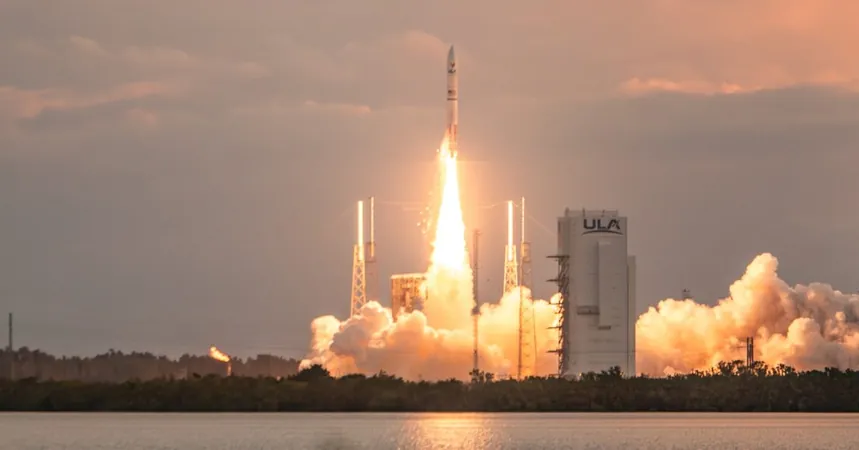
ULA Sets Ambitious 2025 Launch Goals for Vulcan Rocket Despite Setbacks
2024-12-29
Author: Ming
ULA Sets Ambitious 2025 Launch Goals for Vulcan Rocket Despite Setbacks
United Launch Alliance (ULA) initially aimed for 2024 to be a hallmark year for its Vulcan rocket program—launching its debut missions and executing national security contracts. However, certification delays have shifted significant plans to 2025, leaving the space community eagerly anticipating the next chapter.
Developed over the past decade since 2014, Vulcan represents ULA's strategic pivot to compete directly with SpaceX’s Falcon 9 and Falcon Heavy rockets. A key aim of the Vulcan project is to reduce dependence on Russian-made engines previously used in the Atlas V, a necessity that has become even more critical given the geopolitical tensions following Russia's invasion of Ukraine. By proactively acquiring enough engines, ULA CEO Tory Bruno managed to stabilize Atlas V operations, unlike Northrop Grumman, which has faced challenges with its Antares launch vehicle due to reliance on the same Russian engine technology.
In 2024, Vulcan successfully completed two launches, starting with its debut in January that intended to carry Astrobotic’s Peregrine lunar lander. While the launch itself was successful, the lunar landing faced significant difficulties. The second flight occurred in October; while it was meant to demonstrate Sierra Space's Dream Chaser, it was ultimately a mass simulator due to project delays. Although this launch reached its intended orbit, an anomaly involving one of the solid rocket motors during ascent has hampered certification progress with the U.S. Space Force. Nonetheless, CEO Tory Bruno remains optimistic, stating that it won't need a third flight for certification.
The Space Force has confirmed that Vulcan is expected to receive its certification by the first quarter of 2025, pushing the initial timeline. ULA had originally hoped to be operational with national security missions by the end of this year, but the delays have made these goals impossible. The next anticipated launch is slated for Spring 2025, featuring USSF-106, an experimental GPS satellite.
Looking ahead to 2025, ULA is preparing a remarkable schedule, anticipating up to 20 Vulcan missions in total. Bruno disclosed to Breaking Defense that there are currently 16 Vulcan rockets ready for launch, with the USSF-106 Vulcan stack already prepared in Florida, eagerly awaiting its payload.
To adjust for Vulcan's delays, ULA might advance an Atlas V mission to early 2025. Currently, ULA has 15 Atlas V rockets left, designated for six Boeing Starliner flights and nine Amazon Kuiper missions. ULA aims to complete all Kuiper launches by late 2025 or early 2026.
If all goes according to plan, a total of 29 launches could occur within the year, setting a new record for ULA. While optimistic projections are common in the industry, ULA's proactive strategies and robust planning surfaces as a critical testament to navigating the tumultuous space launch landscape.
As ULA braces for what could be its most significant year yet, the space sector remains on the edge of its seat—knowing that in the world of rocket launches, anything can happen!



 Brasil (PT)
Brasil (PT)
 Canada (EN)
Canada (EN)
 Chile (ES)
Chile (ES)
 Česko (CS)
Česko (CS)
 대한민국 (KO)
대한민국 (KO)
 España (ES)
España (ES)
 France (FR)
France (FR)
 Hong Kong (EN)
Hong Kong (EN)
 Italia (IT)
Italia (IT)
 日本 (JA)
日本 (JA)
 Magyarország (HU)
Magyarország (HU)
 Norge (NO)
Norge (NO)
 Polska (PL)
Polska (PL)
 Schweiz (DE)
Schweiz (DE)
 Singapore (EN)
Singapore (EN)
 Sverige (SV)
Sverige (SV)
 Suomi (FI)
Suomi (FI)
 Türkiye (TR)
Türkiye (TR)